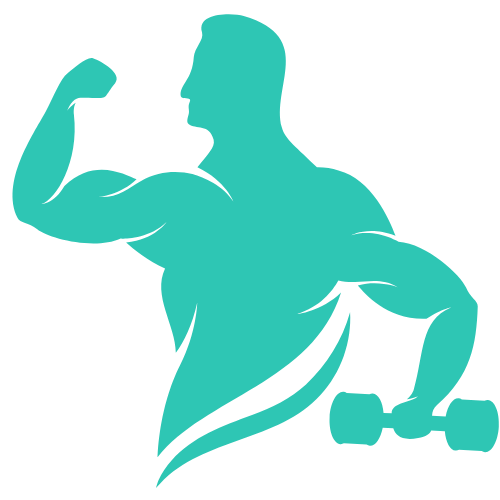From Novice to Ninja: Beginner Crossfit Workouts
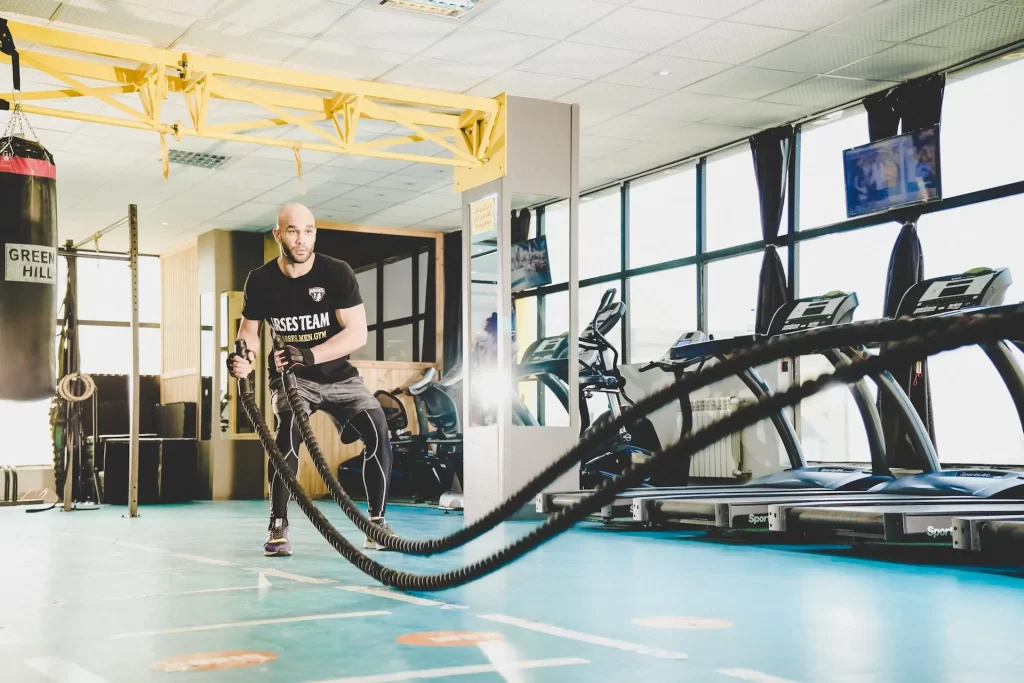
I. Introduction
The Rise of Crossfit: Revolutionize Your Fitness Journey
In recent years, Crossfit has taken the fitness world by storm, captivating individuals with its unique approach to exercise and training. Unlike traditional workout routines, Crossfit combines elements of weightlifting, cardiovascular exercise, and functional movements to create a comprehensive and intense workout experience. Whether you’re a beginner just starting your fitness journey or someone looking to switch up their routine, Crossfit offers a challenging and rewarding option that can revolutionize your approach to fitness.
Breaking Misconceptions: Beginner Crossfit Workouts
While Crossfit has gained a reputation for its intense workouts and competitive atmosphere, it should not deter beginners from giving it a try. Contrary to popular belief, Crossfit is not just for the super fit or elite athletes. In fact, it can be an excellent choice for individuals at any fitness level, including beginners. With proper guidance, scaling options, and a supportive community, Crossfit can be adapted to meet the needs of beginners and provide them with an effective and enjoyable workout experience.
Explore our article about Calisthenics for Beginners.
II. Understanding Crossfit
Brief History: Origins and Evolution
Crossfit was founded in the early 2000s by Greg Glassman and has since grown into a global fitness phenomenon. Originating from a small gym in California, Crossfit quickly gained popularity due to its emphasis on functional movements, high-intensity workouts, and measurable results. The Crossfit methodology has evolved over time, incorporating elements from various fitness disciplines and constantly pushing the boundaries of what the human body is capable of.
Defining the Crossfit Approach: Functional Movements and Intensity
At its core, Crossfit focuses on functional movements, which are exercises that mimic real-life natural movements. These movements include squatting, pushing, pulling, jumping, and lifting, among others. By incorporating these functional movements into workouts, Crossfit aims to improve overall strength, flexibility, and mobility, enhancing your ability to perform everyday tasks with ease.
Another key aspect of Crossfit is its emphasis on intensity. Workouts are designed to be challenging and push you to your limits, with the goal of maximizing results in a shorter period of time. By combining high-intensity intervals, strength training, and cardiovascular exercises, Crossfit workouts provide a holistic approach to fitness that can yield significant improvements in endurance, strength, and overall athleticism.
Benefits of Crossfit: Building Strength, Endurance, and Overall Fitness
One of the main reasons why Crossfit has gained such a devoted following is its undeniable ability to deliver results. Regular Crossfit workouts can help you build strength, increase endurance, and improve overall fitness levels. By constantly varying the exercises, intensity, and duration of the workouts, Crossfit challenges the body to adapt and grow stronger. Additionally, the supportive and competitive nature of the Crossfit community often provides an extra motivational boost to push yourself beyond your limits.
Debunking Myths: Clearing Doubts About Crossfit
As with any fitness program, Crossfit has its fair share of myths and misconceptions. It’s important to address these doubts to provide beginners with accurate information. Despite popular belief, Crossfit is not solely focused on heavy lifting or extreme workouts that lead to injury. With proper coaching and attention to form, Crossfit can be safely modified and scaled to meet the needs and abilities of individuals at any fitness level. Additionally, the community aspect of Crossfit creates a supportive environment where beginners can feel encouraged and motivated.
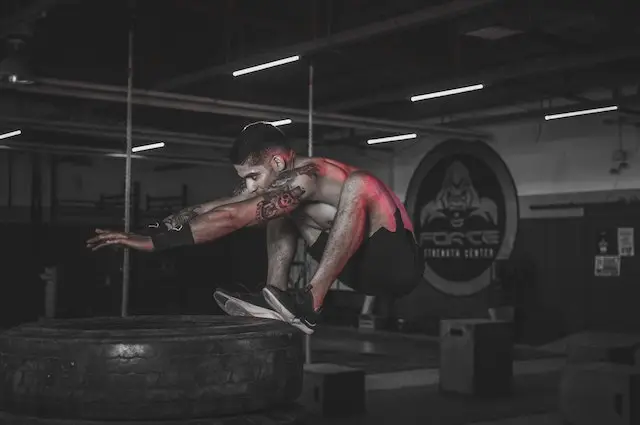
III. Preparing for Crossfit
Assessing Your Fitness Level: Setting Realistic Goals
Before diving into Crossfit, it’s important to assess your current fitness level and set realistic goals. This will help you tailor your workouts and track your progress effectively. Consider factors such as your strength, endurance, and mobility to determine where you currently stand. By setting specific and measurable goals, you’ll be able to track your progress and celebrate your achievements along the way.
Finding the Right Crossfit Box/Gym: Factors to Consider
Finding the right Crossfit box or gym is crucial for a positive and successful experience. When choosing a facility, consider factors such as location, class schedules, coaching staff, equipment availability, and the overall atmosphere. Visiting multiple boxes and talking to coaches and members can give you a better sense of the environment, community, and level of support. Finding a box that aligns with your goals and values will greatly enhance your Crossfit journey.
Understanding Essential Crossfit Terminology: Glossary
Like any specialized field, Crossfit has its own terminology that can seem overwhelming to beginners. However, understanding these terms will help you navigate workouts and communicate effectively with coaches and fellow athletes. Here are a few essential terms to get you started:
- WOD (Workout of the Day): The daily workout that is programmed for Crossfit athletes.
- AMRAP (As Many Reps/Rounds as Possible): A workout format where you aim to complete as many reps or rounds of a given exercise within a specific time frame.
- EMOM (Every Minute on the Minute): A workout format where you perform a specific exercise or set of exercises at the start of every minute for a designated duration.
- RX: The prescribed or recommended weight, reps, and movements for a particular workout.
- Box: A Crossfit gym or facility.
By familiarizing yourself with these terms and asking for clarification when needed, you’ll quickly become fluent in the language of Crossfit.
Required Gear and Equipment for Crossfit Workouts
Unlike traditional gym workouts, Crossfit typically requires minimal equipment. However, investing in a few key pieces of gear can greatly enhance your performance and ensure your safety during workouts. Some essential equipment to consider includes:
- Crossfit shoes: These specialized shoes provide stability, support, and flexibility for the dynamic movements performed in Crossfit workouts.
- Knee sleeves: For added knee support and protection during exercises that involve squatting or putting pressure on the knees.
- Lifting belt: A belt that provides support to the lower back during heavy lifts, helping maintain proper form and reducing the risk of injury.
- Wrist wraps: These wraps provide stability and support to the wrists, especially during exercises that involve pressing movements.
- Jump rope: An essential tool for improving cardiovascular endurance and mastering double-unders, a common Crossfit movement.
- Resistance bands: These bands can be used for warm-up exercises, mobility work, and strengthening specific muscle groups.
While not all of these items are necessary when starting out, they can enhance your Crossfit experience as you progress and become more involved in the sport.
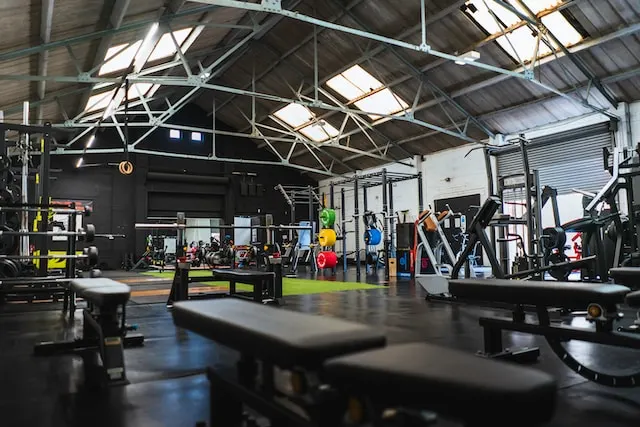
IV. Beginner Crossfit Workouts
Warm-Up Routines: Preparing Your Body for the Intensity
Before diving into a Crossfit workout, it’s essential to warm up your body properly. A dynamic warm-up routine that includes mobility exercises, such as arm circles, leg swings, and hip openers, will help increase blood flow, loosen up your muscles, and prevent injury. Spending 10-15 minutes on a warm-up routine is essential for preparing your body for the intensity of a Crossfit workout.
Bodyweight Workouts: Mastering Fundamental Movements
Bodyweight workouts are an excellent starting point for beginners, as they allow you to focus on mastering fundamental movements without the added complexity of weights. Here are a few bodyweight exercises that every beginner should become familiar with:
Squats and Lunges: Strengthening Lower Body
Squats and lunges are foundational lower body exercises that target the quadriceps, hamstrings, glutes, and calves. Start by practicing proper squat form, keeping your feet shoulder-width apart, sending your hips back and down, and keeping your knees in line with your toes. Lunges can be performed by stepping forward or backward, ensuring your front knee stays directly above your ankle.
Push-Ups and Planks: Building Upper Body Strength and Core Stability
Push-ups and planks are excellent exercises for building upper body strength and core stability. To perform a push-up, start in a high plank position with your hands slightly wider than shoulder-width apart. Lower your body by bending your elbows until your chest touches the floor, and then push yourself back up. Planks involve holding a high plank position, focusing on engaging your core and maintaining a straight line from head to toe.
Burpees and Jumping Jacks: Enhancing Cardiovascular Endurance
Burpees and jumping jacks are dynamic exercises that elevate your heart rate, improving cardiovascular endurance. Burpees involve quickly transitioning from a standing position to a plank, performing a push-up, jumping your feet forward, and then explosively jumping up with your arms overhead. Jumping jacks are performed by jumping your feet out wide while simultaneously raising your arms above your head, and then jumping back to the starting position.
Introduction to Weightlifting: Developing Power and Muscle
Weightlifting is a key component of Crossfit and can greatly enhance your strength and muscle development. As a beginner, it’s crucial to start with lighter weights and focus on mastering proper form and technique before progressing to heavier loads. Here are a few weightlifting exercises to get you started:
Deadlifts: Mastering Proper Form and Technique
Deadlifts target the posterior chain, including the hamstrings, glutes, and lower back. To perform a deadlift, start with your feet shoulder-width apart, bend your knees, hinge at the hips, and grip the bar just outside your legs. Keep your back flat, chest up, and core engaged as you lift the bar by driving through your heels and extending your hips until you’re standing tall. Lower the bar back down to complete one rep.
Overhead Press: Building Strong Shoulders and Arms
The overhead press primarily targets the shoulders, triceps, and upper back. Start with the barbell resting on your shoulders, hands slightly wider than shoulder-width apart. Press the bar overhead by fully extending your arms and maintaining a stable core. Lower the bar back down to your shoulders to complete one rep. As a beginner, you can start with lighter weights or even use dumbbells until you feel comfortable with proper technique.
Power Cleans: Explosive Full-Body Workout
Power cleans are a dynamic compound movement that targets multiple muscle groups, including the legs, hips, back, and shoulders. Begin in a squat position with your feet shoulder-width apart, gripping the bar just outside your legs. Explosively extend your legs, hips, and shrug your shoulders to generate upward momentum on the barbell. As the barbell reaches chest height, quickly drop into a front squat position and catch the barbell on your shoulders. Stand up to complete one rep. It’s important to focus on proper technique and start with lighter weights to avoid injury.
Cardiovascular Workouts: Improving Stamina and Endurance
Crossfit incorporates a wide range of cardiovascular workouts to improve stamina and endurance. These workouts often involve high-intensity intervals and can be modified to suit your fitness level. Here are two cardio workouts that beginners can incorporate into their training:
Running Intervals: High-Intensity Sprints and Recovery
Running intervals are an effective way to improve cardiovascular fitness and increase sprinting speed. Start by jogging or walking at a comfortable pace to warm up. Then, choose a distance or time frame for your sprints, such as 200 meters or 30 seconds. Sprint at maximum effort for the designated distance or time, followed by a recovery period of walking or light jogging. Repeat this pattern for several rounds, gradually increasing the intensity and duration of your sprints as you progress.
Rowing Circuit: Working Multiple Muscle Groups Simultaneously
Rowing is a low-impact exercise that engages your upper body, lower body, and core. A rowing circuit workout can be a great way to build endurance while working multiple muscle groups simultaneously. Start with a warm-up row at a comfortable pace, then switch between high-intensity intervals and recovery periods. For example, row at a fast pace for 500 meters, followed by a slower-paced row for 250 meters as your recovery. Repeat this pattern for several rounds, gradually increasing the distance and intensity of your intervals.

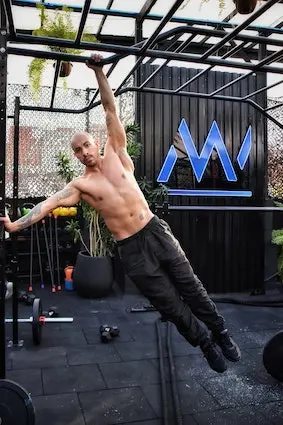
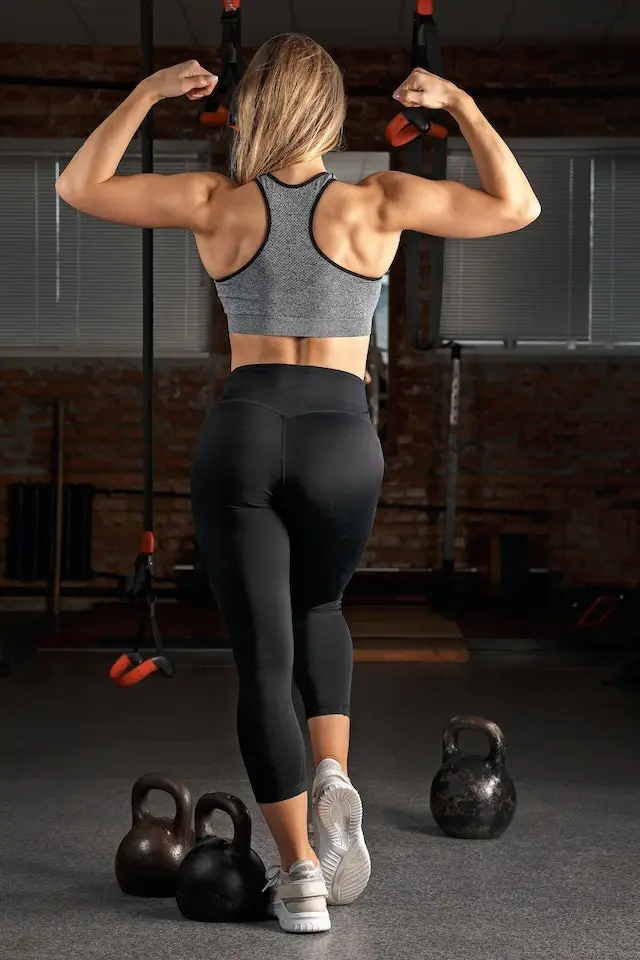
V. Nutrition for Crossfit Success
Understanding the Importance of Proper Nutrition
Proper nutrition is a critical component of any fitness journey, including Crossfit. Fueling your body with the right nutrients can improve performance, aid in recovery, and support overall health. To maximize your success, consider the following nutrition principles:
- Prioritize whole, nutrient-dense foods: Focus on consuming lean proteins, colorful fruits and vegetables, healthy fats, and complex carbohydrates to provide your body with the necessary nutrients and fuel for your workouts.
- Monitor portion sizes: While it’s important to eat enough to fuel your workouts, be mindful of portion sizes to maintain a healthy body composition.
- Stay hydrated: Adequate hydration is crucial for optimal performance and recovery. Drink water throughout the day, especially before, during, and after your workouts.
Pre- and Post-Workout Meals: Fueling Your Body for Optimal Performance
To optimize your performance during Crossfit workouts, it’s important to fuel your body with the right nutrients before and after training sessions. Here are some ideas for pre- and post-workout meals:
- Pre-workout: Prioritize easily digestible carbohydrates, such as a banana or oatmeal, to provide your body with quick energy. Pair it with a small amount of protein, such as Greek yogurt or a protein shake, for sustained energy.
- Post-workout: Aim to consume a balanced meal that includes protein, carbohydrates, and healthy fats to support muscle recovery and replenish energy stores. Examples include grilled chicken or fish with a side of roasted sweet potatoes and a colorful salad.
Tracking Macros and Micronutrients: Balancing Your Diet for Crossfit
To optimize your nutrition for Crossfit, tracking macros (macronutrients) and micronutrients can be beneficial. Macronutrients include proteins, carbohydrates, and fats, while micronutrients refer to vitamins and minerals. Balancing these nutrients in your diet can support muscle growth, recovery, and overall health. Consider using nutrition tracking apps or working with a nutritionist to determine your specific macronutrient needs and ensure you’re getting a variety of micronutrients through a well-rounded diet.
Hydration: Staying Hydrated During Intense Crossfit Workouts
Staying hydrated is crucial when it comes to intense workouts like Crossfit. Dehydration can lead to decreased performance, fatigue, and an increased risk of injuries. To stay hydrated during your workouts:
- Drink water throughout the day, even when you’re not working out.
- Consume water or a sports drink before, during, and after your workouts, especially if you’re sweating heavily.
- Pay attention to signs of dehydration, such as dark urine or feelings of thirst, and make a conscious effort to drink more fluids.
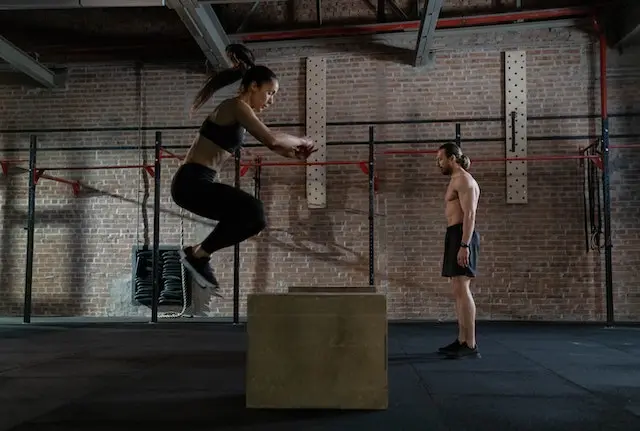
VI. Recovery and Injury Prevention
Emphasizing Rest and Recovery: Avoiding Overtraining
Rest and recovery are often overlooked aspects of any training program but are essential for long-term progress and injury prevention. While it may be tempting to push yourself every day, it’s important to listen to your body and take rest days when needed. Overtraining can lead to fatigue, decreased performance, and an increased risk of injuries. Incorporate rest days into your Crossfit training schedule, allowing your body to recover and adapt to the demands of intense workouts.
Mobility and Stretching Exercises: Increasing Flexibility and Preventing Injuries
Flexibility and mobility are crucial for proper movement patterns and injury prevention. Incorporating mobility exercises and stretching into your routine can enhance your flexibility and range of motion. Consider adding exercises like lunging hip openers, shoulder dislocations, and deep squat holds to improve mobility in specific areas of your body. Performing these exercises regularly can improve your performance during Crossfit workouts, reduce the risk of injuries, and promote overall joint health.
Self-Myofascial Release (Foam Rolling): Easing Muscle Tension and Soreness
Self-myofascial release, commonly known as foam rolling, is a technique that helps release muscle tension, reduce soreness, and improve circulation. By using a foam roller or other tools, you can target specific muscle groups and apply pressure to release tight knots or trigger points. Make foam rolling a regular part of your recovery routine, especially after intense Crossfit workouts, to help alleviate muscle soreness and improve overall mobility.
Recognizing Common Crossfit Injuries and How to Prevent Them
While Crossfit is known for its safety measures and emphasis on proper form, injuries can still occur if precautions are not taken. It’s important to familiarize yourself with common injuries and how to prevent them. Some common injuries include:
Strains and Sprains: Overexertion or improper technique can lead to muscle strains and ligament sprains. To prevent these injuries, start with lighter weights and focus on proper form. Gradually increase the intensity of your workouts as your strength and technique improve.
Shoulder Injuries: The repetitive overhead movements, such as snatches and overhead presses, can put strain on the shoulders. To prevent shoulder injuries, ensure your shoulder mobility is adequate, and don’t skip warm-up and mobility exercises before lifting.
Lower Back Pain: Poor form during exercises like deadlifts and kettlebell swings can lead to lower back pain. Protect your lower back by maintaining a neutral spine and engaging your core muscles during these movements. Consider seeking guidance from a coach to perfect your form.
Hand Rips and Tears: High-repetition movements, like pull-ups and kettlebell swings, can lead to hand tears and blisters. To prevent this, ensure you have proper hand protection, such as gymnastics grips or tape, and maintain good grip technique.
Rhabdomyolysis: This rare but severe condition can occur when athletes push themselves too hard and experience extreme muscle breakdown. To prevent rhabdomyolysis, always listen to your body, stay hydrated, and avoid excessive training volume, especially as a beginner.
Achilles Tendonitis: Intense jumping exercises, like box jumps and double unders, can strain the Achilles tendon. To reduce the risk, warm up properly, and gradually increase the height or intensity of your jumps. Pay attention to any signs of discomfort in your Achilles tendon and seek medical advice if needed.
Knee Injuries: High-impact exercises, such as squatting and lunging, can put stress on the knees. To prevent knee injuries, ensure proper squatting form, don’t rush into heavy weights, and consider knee sleeves or braces for added support.
Remember that injury prevention is not only about good form but also about listening to your body, scaling workouts as needed, and giving yourself adequate rest and recovery time. Consulting with a certified CrossFit coach or physical therapist can also be beneficial to ensure your safety and progress in this demanding fitness discipline.
VII. Conclusion
In recent years, CrossFit has emerged as a fitness phenomenon, revolutionizing the way we approach exercise and training. It combines diverse elements of weightlifting, cardio, and functional movements to provide a holistic and intense workout experience. Contrary to common misconceptions, CrossFit is accessible to beginners and offers a supportive community eager to help newcomers thrive.
Understanding the core principles, such as functional movements and intensity, is essential to embark on this fitness journey. The benefits of CrossFit are undeniable, ranging from increased strength and endurance to the motivating atmosphere fostered by the community.
As you prepare to embark on your CrossFit journey, remember to assess your fitness level, find the right box that aligns with your goals, and familiarize yourself with the essential terminology. Investing in proper gear and equipment, including CrossFit shoes and knee sleeves, can enhance your performance and safety.
Our guide has covered various aspects of CrossFit, from warm-up routines and bodyweight exercises to weightlifting and cardiovascular workouts. Each step of the way, we’ve emphasized the importance of proper nutrition, hydration, and recovery to optimize your experience.
In conclusion, CrossFit offers a dynamic and effective approach to fitness that can transform your life. Whether you’re just beginning or looking to take your fitness journey to the next level, CrossFit’s diverse workouts, supportive community, and emphasis on continuous improvement make it a compelling choice. So, lace up your shoes, set your goals, and embrace the journey to a stronger, healthier you through CrossFit.
Frequently Asked Questions (FAQs) Your Guide to CrossFit Workouts
No, CrossFit is for anyone willing to put in the effort to improve their fitness. While it’s true that elite athletes often participate, CrossFit is designed to be scalable to meet the needs of individuals at various fitness levels.
“WOD” stands for “Workout of the Day.” It is the daily workout programmed for CrossFit athletes. WODs vary in exercises, intensity, and duration, providing a diverse and challenging workout experience.
CrossFit can be safe when performed with proper form and under the guidance of certified coaches. Injury risk increases when participants use improper technique or attempt workouts beyond their current capabilities. Safety is a priority in CrossFit, and it’s essential to communicate any concerns with your coach.
The frequency of CrossFit workouts depends on your fitness goals and recovery capacity. Many people start with 3-4 sessions per week and gradually increase as they become more experienced. It’s essential to incorporate rest days into your schedule to prevent overtraining.
While CrossFit typically requires minimal equipment, it’s helpful to have some key items, such as CrossFit shoes, knee sleeves, and a jump rope. The specific equipment needed may vary depending on your goals and the workouts you participate in.
CrossFit can be an effective tool for weight loss when combined with a proper nutrition plan. The high-intensity workouts burn calories and build muscle, which can contribute to fat loss. However, diet plays a significant role in achieving weight loss goals.
